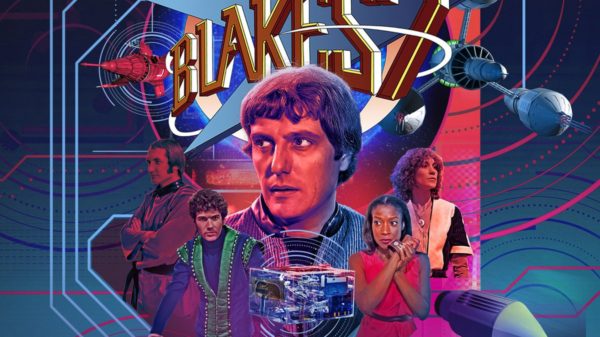The battle to save the Liberator from destruction, and to recover the full operating capacity of the most powerful spaceship in the galaxy, is at the heart of each of the four stories in the opening salvo of Big Finish’s new Blake’s 7 audio series.
With their vessel damaged beyond the ability of the craft’s own automatic repair units to make good, the crew must salvage equipment and spares from any source available – whatever the risks – before their ship disintegrates.
If it is to avoid being overly dry, any drama based around the need to fix broken machinery must, of course, focus on the human rather than the technical, mechanical elements of the challenge. All of the writers working on the four-part Restoration: Part 1 understand this implicitly and make great use of the setting of the Liberator’s death-throes to show how different crew members react to the mortal crisis. For each of them, the impending detonation of their ship tests their commitment to the cause, and their sense of loyalty to each other, in markedly different ways.
Following on directly from the closing events of the Crossfire boxsets, opening story Damage Control makes clear just how parlous the state of the Liberator is – and how stressed and pressured the crew are as a consequence. The cliffhanger of the Crossfire finale morphs into the perils of Restoration, as the failing Zen directs the crew in the direction of vital spares scattered across the galaxy. This sets up the various missions that the crew then split up to execute, before reassembling to try to save the ship. Trevor Baxendale pens a vivid picture of a flight deck marked as much by disagreement and distrust as by any feeling of unity in adversity.
For many listeners, second episode The Hunted will be the highlight of the four stories on offer here. Two-handers featuring Darrow’s Avon and Keating’s Villa are always a fan favourite. Well served by Iain McLaughlin’s well-plotted script, which combines high-stakes action-and-adventure with some acutely observed dialogue, both actors are on fantastic form here. Additional credit should also go to Nigel Fairs for some excellent sound design, which adds tension and momentum to the game of hide-and-seek within a volatile asteroid belt at the story’s core.
Scott Harrison’s Figurehead shifts the focus onto Tarrant and Cally, who find themselves plunged into the chaotic situation on Gamma Vynos II, where the overthrow of Federation control threatens to be the trigger for a new era of tyranny and injustice. The pair try to track down Avalon, before crossing paths with the treacherous Zeera Voss and Jaryss Vull and their competing megalomaniac ambitions.
As the title of closing episode Abandon Ship makes grimly clear, all efforts to save the Liberator appear to have been in vain and, with life support functions failing, the craft can no longer sustain a human crew of five. As the prospect of the ship’s implosion looms large, relations between crewmates worsen, fresh allegiances are forged and broken, agreements are struck and then abandoned, and deceptions attempted.
Steve Lyons’ script delivers fast-moving action sequences throughout, but the story’s key focus is the dynamic between independence and interdependence in the relations between crew mates. “We can survive without the Liberator,” Cally suggests to Avon. “But we need each other.” Not everyone on board seems quite so convinced of that. The story reveals how far the pressure cooker the crew are trapped in impacts on the psychology and mental health of those on board.
This is a confident and effective first instalment in this latest Blake’s 7 trilogy, that holds true to the series’ recognition that there should be no easy victories for these outlaws in outer space. Everyone in the cast is completely at ease in their roles, including relative newcomers Alistair Lock (Orac) and Yasmin Bannerman (Dayna) and absolutely in tune with their characters’ strengths, weaknesses and foibles.
While it’s the need to replace the Liberator’s broken bits that provides the McGuffin for part one of the series (and sets up part two) this is above all else a character piece, that even finds time to give Orac some unexpected personality development.
![]()

